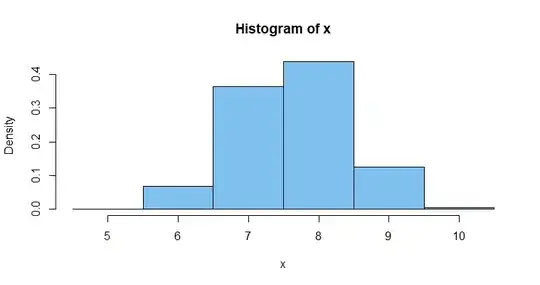There are 10 different types of stickers. We have a collection of 20 stickers, where each sticker appears twice (each and every sticker has a duplicate). Now we are asked to put 10 stickers in two bags (each bag contains exactly 10 stickers), when there are no same stickers in every bag, so they are distinct. What is the probability of this arrangement?
My attempt was to think about ways to choose an $x$ which will suit the general formula $\cfrac{ x}{{20 \choose 10}}$ but with no success. I also thought about calculating the probability using the intuitive method of choosing the first bag:
$\cfrac{2}{{20}}⋅\cfrac{2}{{19}}⋅\cfrac{2}{{18}}⋅\cfrac{2}{{17}}⋅\cfrac{2}{{16}}⋅\cfrac{2}{{15}}⋅\cfrac{2}{{14}}⋅\cfrac{2}{{13}}⋅\cfrac{2}{{12}}⋅\cfrac{2}{{11}}$
When we have 10 iterations of probabilities of choosing one of 2 different stickers out of what we have at the moment of choosing. But I was wrong. The book says that the probability is just: $$\cfrac{ 2^{10}}{{20 \choose 10}}$$
Which looks like a combination of my two attempts. I still don't get the point. It seems like a relatively easy question, but I find it confusing.
